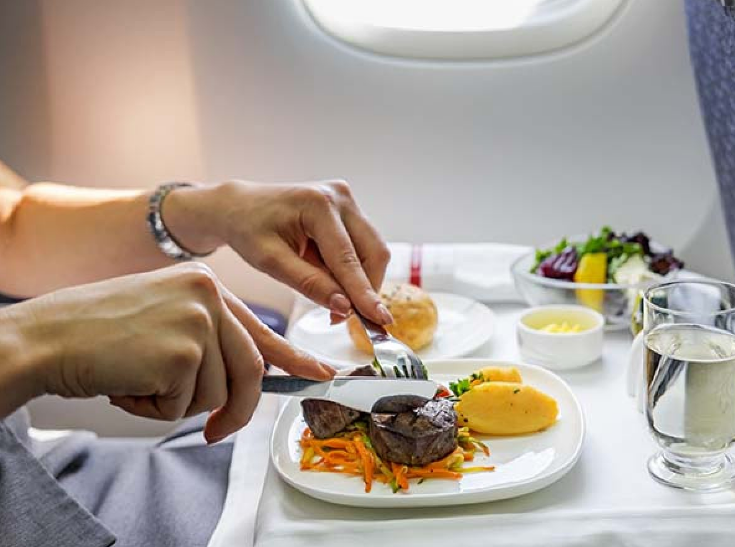In the competitive world of aviation, passenger experience is one of the most important differentiators. Beyond comfortable seating and smooth operations, food quality plays a critical role in shaping customer satisfaction. For airlines, working with the right inflight catering services provider can elevate the onboard dining experience from a basic necessity to a memorable highlight of the journey.
Choosing such a partner, however, requires more than just finding someone who can deliver meals on time. Airlines must consider factors like food quality, operational reliability, menu innovation, safety compliance, and cost-effectiveness. Here’s a detailed guide on how to select the ideal inflight catering services provider for your airline.
Understanding the Role of Inflight Catering Services
Inflight catering goes beyond preparing food—it’s about delivering a seamless dining experience that reflects the airline’s brand, meets passenger expectations, and complies with strict safety and hygiene standards. A high-quality catering partner should be able to:
- Design menus that cater to diverse passenger tastes and dietary requirements.
- Ensure freshness and consistency, regardless of flight schedules or destinations.
- Adapt to seasonal ingredient availability and changing food trends.
For airlines, partnering with a dependable provider is not just a service contract—it’s a strategic relationship that influences brand perception.
Key Factors to Consider When Selecting a Provider
1. Quality and Consistency of Food
Passengers expect their meals to be fresh, flavorful, and well-presented. Evaluate a provider’s track record in delivering consistently high-quality meals, even under tight schedules. Request sample menus, conduct taste tests, and inspect preparation facilities before making a decision.
2. Menu Innovation and Customization
The best inflight catering services providers are not just suppliers—they are culinary innovators. They should be able to design menus that reflect your airline’s brand identity while catering to diverse passenger demographics. This includes:
- Regional specialties for specific routes.
- Premium menus for business and first-class passengers.
- Special dietary options such as vegetarian, vegan, gluten-free, and allergen-free meals.
3. Safety and Hygiene Standards
A top priority in aviation catering is food safety. The provider must comply with international food safety regulations, such as HACCP (Hazard Analysis and Critical Control Points) standards, and ensure thorough staff training. Regular audits and transparent reporting should be part of the partnership.
4. Operational Efficiency and Reliability
Flight schedules are unforgiving—meals must be ready and delivered on time, every time. The right catering partner will have efficient supply chain management, contingency plans for delays, and the ability to service multiple destinations without compromising quality.
5. Sustainability Practices
As airlines strive to reduce their environmental footprint, catering services should align with these goals. Look for partners that source local ingredients, reduce food waste, use eco-friendly packaging, and support sustainable farming practices. Sustainability is increasingly important to passengers and can enhance your brand image.
See also: A name on a piece of jewelry, a world of memories
Benefits of Partnering with the Right Inflight Catering Provider
A strong relationship with a high-quality inflight catering services provider can yield multiple benefits:
- Enhanced Passenger Satisfaction – Great meals can turn a good flight into an exceptional one.
- Stronger Brand Positioning – Unique, high-quality menus differentiate your airline from competitors.
- Operational Efficiency – A reliable partner reduces last-minute disruptions and ensures smooth meal service.
- Long-Term Cost Savings – Efficient operations, reduced waste, and streamlined procurement can lower costs over time.
Steps to Building a Strong Partnership
1. Define Your Airline’s Culinary Vision
Before approaching providers, clarify your goals. Do you want to highlight local cuisine? Offer gourmet dining in premium cabins? Focus on health-conscious menus? This vision will guide your selection process and help align expectations with the provider.
2. Conduct a Thorough Supplier Evaluation
Assess potential partners based on:
- Facility inspections.
- Food sampling sessions.
- Compliance with international aviation catering standards.
- References from other airline clients.
3. Negotiate Clear Service Level Agreements (SLAs)
An SLA should outline key performance indicators such as on-time delivery rates, food quality standards, hygiene compliance, and customer feedback metrics. This ensures accountability and sets a foundation for continuous improvement.
4. Collaborate on Menu Development
Work closely with your catering partner’s culinary team to create menus that balance passenger preferences, operational feasibility, and cost efficiency. Seasonal updates can keep menus fresh and appealing.
5. Implement Regular Reviews and Feedback Loops
Hold quarterly or biannual review meetings to discuss performance, passenger feedback, and potential improvements. Encouraging open communication fosters a strong, long-term partnership.
Technology’s Role in Modern Inflight Catering
Today’s inflight catering services providers are leveraging technology to improve efficiency and quality. Airlines should look for partners who:
- Use digital inventory management systems to reduce waste.
- Employ real-time logistics tracking for precise delivery scheduling.
- Offer passenger meal pre-order platforms for customization.
- Utilize AI for menu planning based on route, season, and passenger data.
By embracing innovation, airlines and caterers can offer more personalized, reliable, and sustainable inflight dining experiences.
Common Mistakes to Avoid When Choosing a Catering Partner
- Focusing Solely on Price – While cost is important, the cheapest option can compromise quality and reliability.
- Neglecting Passenger Preferences – Failing to tailor menus to passenger demographics can impact satisfaction.
- Overlooking Scalability – Ensure the provider can handle growth in routes, passengers, or service classes.
- Ignoring Cultural Sensitivities – For international routes, catering must respect cultural and religious dietary rules.
Case Example: Elevating the Passenger Experience
Consider an airline that decided to revamp its onboard dining by partnering with a premium inflight catering services provider. By introducing menus designed by celebrity chefs, sourcing locally for each route, and offering a pre-order system for passengers, the airline saw:
- A 25% increase in positive passenger feedback on food quality.
- Reduced food waste by 15% through better portion planning.
- Enhanced brand reputation, especially among frequent flyers.
This example highlights how the right catering partner can directly influence both passenger satisfaction and operational performance.
Conclusion
Choosing the right inflight catering services provider is not just a procurement decision—it’s a strategic move that can elevate your airline’s brand, improve passenger satisfaction, and optimize operations. By focusing on quality, safety, innovation, and alignment with your brand vision, you can build a partnership that delivers exceptional value on every flight.
In the competitive airline industry, where every detail counts, inflight catering can be a powerful differentiator. With the right partner, your passengers will remember more than just the destination—they’ll remember the exceptional dining experience they enjoyed along the way.




